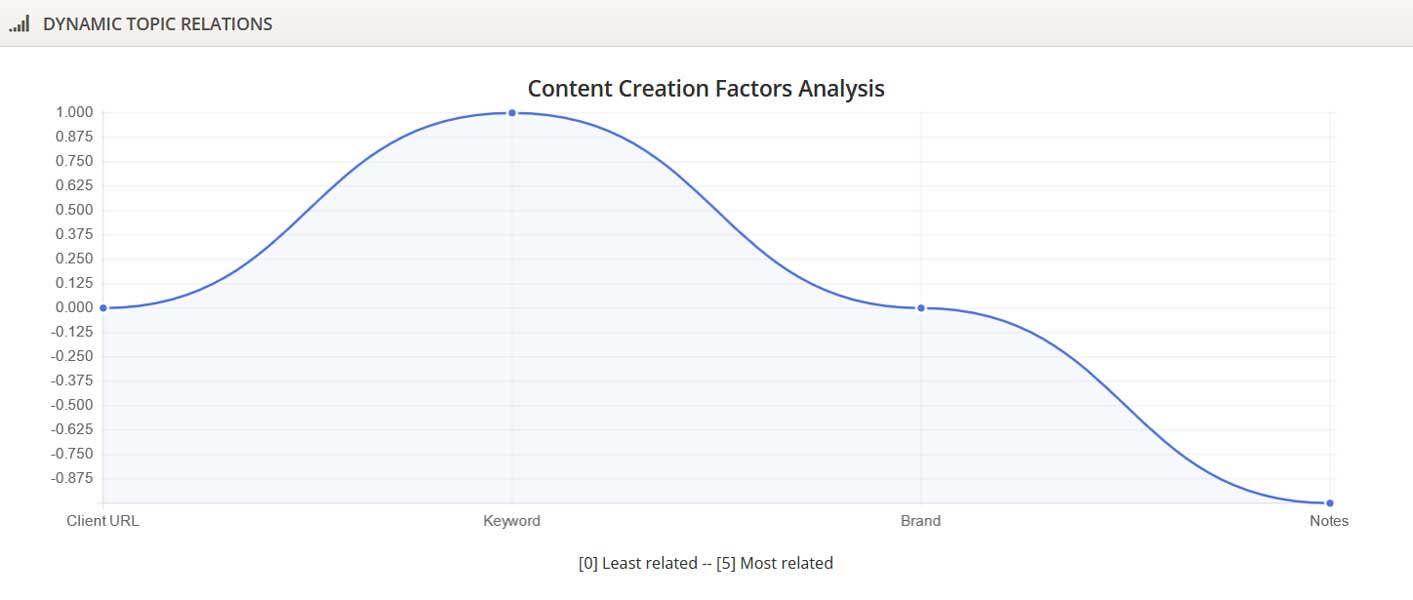In the realm of digital marketing and content creation, the emergence of AI-driven writing tools has been nothing short of revolutionary. Yet, despite their ingenuity, a glaring gap has remained—a disconnect in context and relevance, a struggle to mirror the nuanced understanding that human writers bring to the table. This is where we began our journey toward a groundbreaking patent-pending solution: Dynamic Topic Relations.
Understanding the Disconnect in AI-Written Content
AI, in its relentless quest for efficiency, often misses the mark in content creation. The result? Articles that are technically accurate yet contextually adrift. The content might tick off SEO boxes, but it lacks the coherence and contextual awareness that human readers—and indeed, modern search engines—crave.
The pursuit of technological advancement in AI-written content has accelerated at an unprecedented pace, leading to substantial gains in efficiency and scale. However, this acceleration has not come without its set of challenges. AI, as it stands, has a propensity for producing content that, while accurate in its inclusion of keywords and phrases, often fails to capture the essence of human touch—coherence and contextual awareness.
The Quest for Efficiency vs. The Need for Context
AI algorithms are designed to optimize for specific performance metrics, often focusing on quantifiable aspects of content such as keyword density, search engine optimization (SEO), and adherence to grammatical rules. This focus on efficiency can lead to content that, while on the surface appears competent, lacks the depth and relatability that human-generated content inherently possesses.
Technical Accuracy Without Relational Context
AI-generated articles can effortlessly compile vast amounts of data, cross-reference sources, and adhere to technical accuracy. Yet, they frequently miss out on the relational context that binds the content to its intended audience. The absence of this relational context can result in a piece that feels disjointed or out of touch with the reader’s expectations or the cultural nuances of the language.
For instance, an AI might write an article on ‘The Impact of Dietary Choices on Health’ by focusing on popular keywords and nutrition facts. However, it might fail to relate these choices to broader societal trends or personal anecdotes that resonate on a human level.
The Coherence Conundrum
Coherence in writing is not merely about stringing together a series of facts or statements—it’s about weaving a narrative that flows logically and maintains the reader’s interest throughout. AI systems, despite their growing sophistication, often struggle with creating a narrative that feels natural and engaging. They might be able to construct sentences that are grammatically correct, but the ability to tell a story with a beginning, middle, and end in a way that feels intuitive to human readers is still in its infancy.
Contextual Awareness and Search Engines
Modern search engines are increasingly sophisticated in understanding and valuing the context and user intent behind search queries. They do not simply look for keyword matches but also evaluate the quality of the content, including its ability to engage users and provide authoritative answers to their questions. AI that produces content lacking this contextual awareness can result in articles that do not perform well in search engine rankings, regardless of their adherence to SEO best practices.
Bridging the Gap with Dynamic Topic Relations
To address these challenges, we integrated Dynamic Topic Relations, which aims to bridge the gap between AI efficiency and human-like contextual awareness. By understanding and applying the conditional nature of human communication, we sought to produce content that not only ticks off technical SEO requirements but also resonates with human readers and aligns with the sophisticated algorithms of modern search engines.
In this way, SEO Vendor is not only responding to the current limitations of AI in content creation but is actively pushing the boundaries of what AI can achieve, bringing it ever closer to the nuanced, context-rich writing that has been the hallmark of quality content.
How Dynamic Topic Relations Work
Dynamic topic relations is more than a tool. Rather, it allowed us to formulate an understanding that cuts through the noise of writing requirements. Through its relations analysis, the AI content conundrum can be solved. It’s like the equivalent of adding an air regulator to a car’s engine.

What is Dynamic Topic Relations?
Dynamic Topic Relations is the algorithmic equivalent of a seasoned writer’s intuition. It understands that directives are conditional, that relevance is key, and that each piece of content must be a cogent component of the larger narrative. It ensures that every keyword, every brand mention, and every instructional nuance is not just included, but woven into the content with a relevance that rivals human discernment.
The Four Alignment Factors
The power of Dynamic Topic Relations lies in its four alignments—Keyword, Brand, Site, and Instructional—which together form a cohesive strategy for content that resonates. These content creation factors, in turn, allows the most natural content production possible.
Keyword Alignment
Gone are the days of exact match keywords. Dynamic Topic Relations brings a more nuanced approach, ensuring that content is not just laden with keywords, but that these keywords align seamlessly with the topic, enhancing relevance and readability.
Brand Alignment
Content is the voice of a brand. Dynamic Topic Relations tailor this voice to fit the narrative of the brand it represents, personalizing content to align with the brand’s ethos and market positioning.
Site Alignment
The content must speak the language of the site it calls home. Dynamic Topic Relations adapt AI writing to echo the voice and subject matter of the site, ensuring consistency and boosting the site’s authority.
Instructional Alignment
Dynamic Topic Relations respect the art of subtlety in instruction. It discerns the appropriate moments to incorporate directives, avoiding pitfalls and adhering to the unique considerations that define quality content.
The Way Forward
Dynamic Topic Relations has not just filled the gap in AI content writing—it has redefined the potential of AI-assisted content creation. It’s not a mere feature; it’s the key that unlocks the true potential of AI in writing, blending the analytical prowess of a machine with the empathetic understanding of a human writer.
The Precision of Alignment Scoring
In the intricate dance of content creation, Dynamic Topic Relations employ a nuanced scoring system that evaluates the relevance of each element within a piece of content. This system grades on a scale from 0 to 5, where each score represents a degree of relatedness, ranging from “Not Related” to “Very Related.”
Keyword Alignment Scoring
For keywords, Dynamic Topic Relations assess how well they integrate within the content’s theme. A score of ‘0’ means the keyword is irrelevant to the topic—imagine a keyword like “apple” used in an article about cloud computing. A ‘1’ might be a keyword like “technology” in an article about cloud computing—broadly in the tech field but not closely related. A ‘5’ would be the keyword “cloud infrastructure,” perfectly hitting the mark of relevance.
Example: An article about “Sustainable Energy” scores a ‘4’ with “solar power” but only a ‘2’ with “renewable resources.”
Brand Alignment Scoring
Brand alignment scores reflect how well the content resonates with the brand’s identity and values. A ‘0’ indicates no correlation, such as discussing fast food in content meant for a luxury wellness brand. A score of ‘5’ means the content is steeped in the brand’s core message, like discussing precision engineering in an article for a high-end automotive brand.
Example: For a sports apparel company, “athletic performance” would score a ‘5’, while “casual wear” might score a ‘3’.
Site Alignment Scoring
Site alignment evaluates if the content maintains the site’s established voice and subject matter. A ‘0’ might be an article about heavy machinery on a pet care blog, whereas a ‘5’ would be an article on pet nutrition for the same blog.
Example: On a financial advisory site, “investment strategies” would score a ‘5’, while “general economic news” might score a ‘3’.
Instructional Alignment Scoring
Instructional alignment measures the extent to which content adheres to given directives. A score of ‘0’ might represent content that entirely disregards the provided instructions, while a ‘5’ indicates content that perfectly encapsulates all directives, enhancing the piece’s relevance and purpose.
Example: If the instruction is to avoid political topics, an article focusing solely on economic statistics without political commentary would score a ‘5’.
Future Factors
As Dynamic Topic Relations evolve, new factors can be seamlessly integrated into this scoring system, allowing for a broader spectrum of alignment checks and more granular content tailoring. The system is a part of the relentless innovation culture here at SEO Vendor.
Dynamic Impact of Alignment Factors
In this era of information overload, we try to offer clarity, relevance, and precision—qualities that define not just good content, but great content.
As such, the alignment scores dynamically impact the article’s content. For instance, if a keyword scores low in relevance, Dynamic Topic Relations might use it sparingly or seek synonyms that better fit the context. Conversely, highly rated keywords would feature prominently, ensuring that the article resonates with the intended search queries.
For brand alignment, a high score would result in content that not only mentions the brand but also aligns with its messaging and audience expectations. A lower score might prompt the AI to re-calibrate, perhaps by shifting the tone or refocusing the content’s angle.
With site alignment, Dynamic Topic Relations ensure that content feels at home on the target website. High-scoring articles will mirror the site’s style and subject matter, reinforcing the site’s thematic consistency.
Instructional alignment ensures the content’s adherence to specific directives, like tone, style, or particular dos and don’ts. High-scoring content here would follow these to the letter, while lower scores might indicate a need for revision to better align with the instructions.
The Writing Future
Dynamic Topic Relations’ alignment scoring is not a static measure but a dynamic guide that influences the flow and substance of content. It’s a symphony conducted by the maestro that is SEO Vendor’s cutting-edge AI, ensuring that every piece of content hits the right note in the grand concert of digital marketing. This patent-pending scoring system, intricate and reflective of the multifaceted nature of content alignment, can be found in SEO GPT 2.








